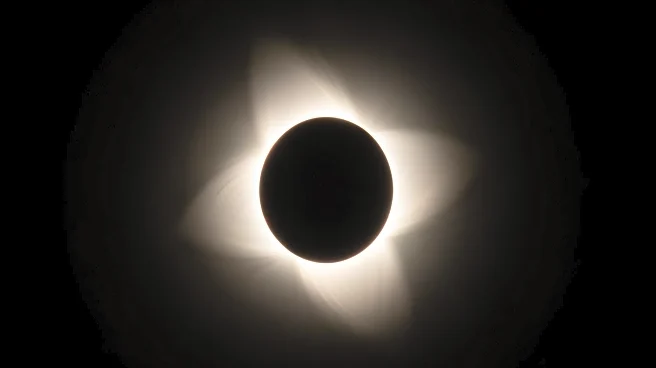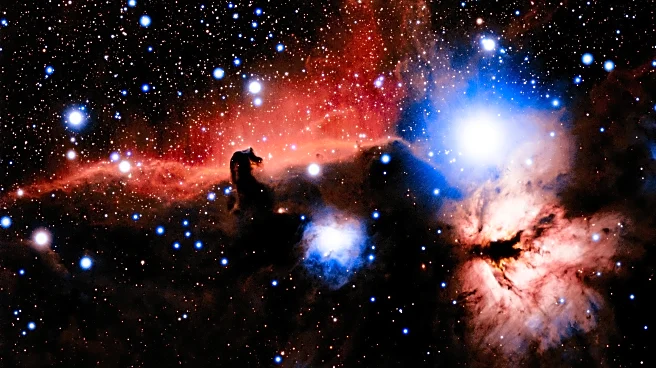What's Happening?
Researchers John Justeson and Justin Lowry have published a study in Science Advances detailing how the ancient Maya used their 260-day ritual calendar to predict solar eclipses. The study focuses on the Dresden
Codex, a hieroglyphic book from the Postclassic period, which includes an eclipse table spanning eight pages. This table originally recorded 405 lunar months, each consisting of 29 or 30 days, and was later repurposed for eclipse prediction. The Maya discovered that eclipses tended to recur on the same named day in the 260-day cycle after 405 lunar months, equivalent to 46 260-day periods. This allowed them to predict eclipse dates over a 32¾-year period starting in either 1083 or 1116 AD.
Why It's Important?
The study provides significant insights into the sophisticated astronomical knowledge of the Maya civilization, highlighting their ability to predict celestial events without modern technology. This understanding of eclipse prediction showcases the advanced observational skills and mathematical calculations of the Maya, contributing to the broader field of cultural astronomy. The findings emphasize the importance of historical astronomical practices and their impact on cultural and scientific development. It also underscores the unique approach of the Maya, who used a 260-day cycle for eclipse prediction, a method not found in other cultures.
What's Next?
The study's findings may prompt further research into other aspects of Maya astronomy and calendrical systems. Scholars might explore additional hieroglyphic texts to uncover more about the Maya's astronomical practices and their cultural significance. The research could also lead to a reevaluation of existing models for dating and recycling the eclipse table, as suggested by some specialists. Continued exploration of Maya astronomy could enhance understanding of ancient scientific methods and their relevance to modern astronomical studies.
Beyond the Headlines
The study highlights the cultural differences in how societies perceive and interact with natural phenomena. The Maya's use of a 260-day cycle for eclipse prediction reflects a distinct cultural approach to astronomy, emphasizing the diversity of scientific thought across civilizations. This research contributes to a deeper appreciation of the Maya's intellectual legacy and their contributions to the history of science.













